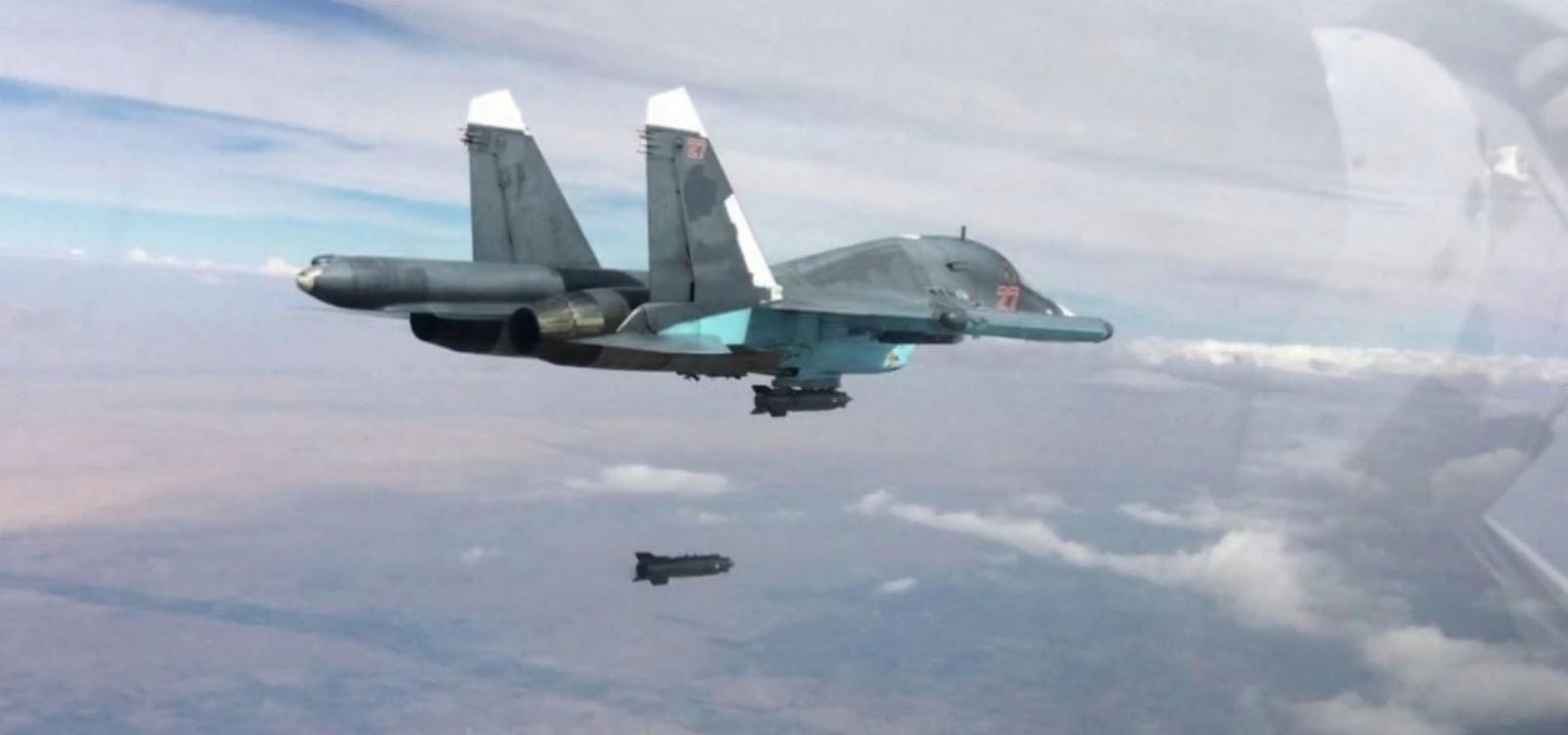spoiler
The Russian air force is lobbing a hundred glide-bombs a day on Ukrainian positions along the 600-mile front line of Russia’s 25-month wider war on Ukraine.
The KAB glide-bombs are a “miracle weapon” for the Russians, Ukrainian Deep State noted. And the Ukrainians have “practically no countermeasures.”
To put into perspective how dangerous the situation is for Ukrainian brigades right now, consider that it took just 125 KABs a day for several days finally to make the defense of Avdiivka, a former Ukrainian stronghold in eastern Ukraine, untenable for the Ukrainian army’s 110th Mechanized Brigade.
The brigade had other problems, of course—specifically, a desperate shortage of artillery ammunition that became inevitable once Russia-friendly Republicans in the U.S. Congress cut off aid to Ukraine in October.
But the KABs were the final straw. “All buildings and structures simply turn into a pit after the arrival of just one KAB,” wrote Egor Sugar, a trooper with the Ukrainian 3rd Assault Brigade, which covered the Avdiivka garrison’s retreat in mid-February.
It’s possible that a massive expansion of Ukraine’s front-line air-defenses might blunt Russia’s glide-bombing edge. The Ukrainian air force shifted part of a 90-mile-range Patriot surface-to-air missile battery closed to the eastern front line around February and managed to shoot down as many as 13 Russian air force Sukhoi Su-34 glide-bombers and escorting Sukhoi Su-35s.
The pace of the glide-bombings may have ebbed somewhat as the shoot-downs spiked. But then, around March 8, a Russian drone spotted the Patriot battery on the move 20 miles from the front line—and cued an Iskander ballistic missile that blew up two Ukrainian launchers.
The Ukrainian air force has just three batteries of American-made Patriots, altogether with around three-dozen launchers. Cut off from further U.S. aid, the air force couldn’t risk losing more Patriots—not when the service also was trying to defend Ukrainian cities against Russian missiles.
So in mid-March, the glide-bomber shoot-downs ended—and the glide-bombings resumed at a rate of a hundred per day. Standard Russian tactics right now are for the Sukhois to, according to Deep State, “water” a Ukrainian garrison with KABs—and then for Russian infantry to attack in small but frequent “banzai charges.”
“Despite a certain stabilization of the front at the beginning of the month, the enemy has been carrying out a large number of rollbacks and banzai attacks for the past 10 days,” Deep State reported Saturday.
It’s unclear how the Ukrainians might end the KAB crisis. Ukrainian lieutenant general Ivan Gavrylyuk said the belated arrival of the Ukrainian air force’s ex-European Lockheed Martin F-16 fighters should help.
And yes, that’s possible. The F-16 has better sensors, self-defenses and missiles than the air force’s current Sukhoi and MiG fighters have. If Kyiv is willing to risk its precious F-16s—just 50 or 60 of which it’s set to receive starting this spring or summer—it might succeed in beating back the glide-bombers.
But it could be a while before the F-16s are in country in sufficient numbers to make much of a difference. In the meantime, the Ukrainian air force only can deploy ground-based air-defenses against the Russian bombers.
Leaving aside the risk to the air-defense crews, these crews also are low on certain types of missiles, Gavrylyuk said.
That’s an obvious reference to the air force’s best Patriot missiles, which mostly are made in the United States. Unless and until Republicans relent and approve $61 billion in long-delayed funding for Ukraine’s war effort, the Ukrainians might never have enough Patriots to fight back against the glide-bombing that now is the key to Russia’s battlefield gains.
“These and other factors make it difficult for the defense forces of Ukraine to carry out the tasks of repelling the aggressor,” Gavrilyuk said.


That said, it is pretty amusing how a bunch of western weapons were marketed as being game changers and then completely failing on the battlefield, and now it's Russia that's deploying a weapon that even the west admits to be making a serious impact.